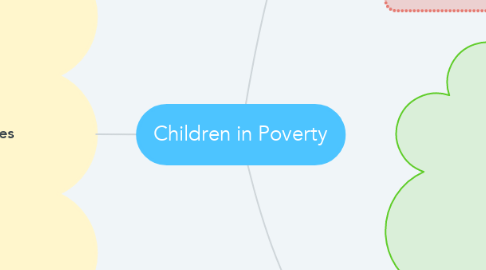
1. Challenges
1.1. Nutrition
1.1.1. Poor Diet
1.1.2. Lack of food supply
1.1.3. Unable to concentrate in class
1.2. Family Relationships
1.2.1. Single Parent
1.2.2. Foster Parents
1.2.3. Custodial Guardian - possibly grandparents
1.3. Living conditions
1.3.1. higher crime
1.3.2. No/Limited technology access
1.4. Education
1.4.1. Bullying from other students
1.4.2. lack of school supplies
1.4.3. mental health
2. Community Resources
2.1. Church
2.1.1. Wednesday night Meals
2.1.2. Harvesters
2.1.2.1. Harvesters is a certified member of Feeding America
2.1.3. Children's activities
2.2. Foodbank
2.3. Child's Health Insurance Program (CHIPs)
2.3.1. low/no cost visits for medical and dental
2.3.2. health fairs
2.3.3. Local health clinics
2.4. SNAP Benefits
2.5. Public libraries
2.5.1. access to internet and books
2.5.2. education programs
2.5.2.1. tutoring
2.5.2.2. Pre-K reading time
2.5.2.3. adult education classes
2.6. Community Centers
2.6.1. Big Brothers Big Sisters
2.6.2. after school programs
2.6.2.1. small meals provided
2.6.3. recreational sports
3. School Resources
3.1. Lunchroom
3.1.1. Breakfast
3.1.1.1. free/reduced
3.1.2. Lunch
3.1.2.1. free/reduced
3.1.3. After school/ Weekend Meals
3.1.3.1. Care packages sent home
3.1.4. School break meals
3.1.4.1. Free meals provided during school breaks and summer
3.2. After school programs
3.2.1. Tutoring
3.2.2. Virtual class assistance
3.2.3. Clubs/sports
3.3. Technology
3.3.1. internet
3.3.2. computers
3.4. Counselors
3.4.1. Safe space to talk
3.5. Transportation
3.5.1. School buses
3.6. Library
3.6.1. access to books
3.6.2. quiet place to study
3.7. McKinney Vento Act
3.7.1. able to enroll in school
3.7.2. able to stay in same school

